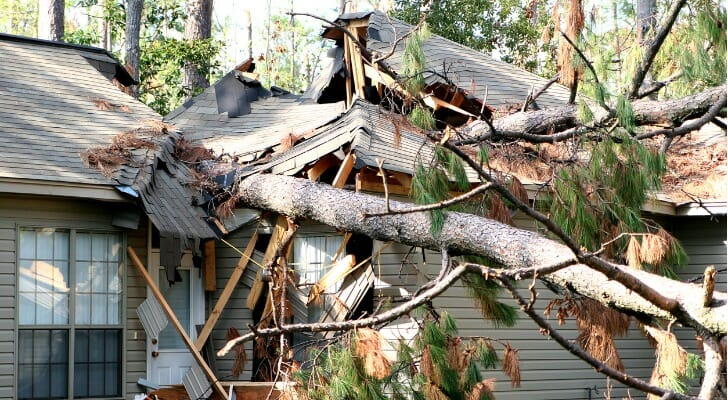 When it comes time to buy a house, you need to have certain types of insurance in order to secure a mortgage. As part of the lending process, your mortgage provider may ask for proof of those insurance policies, such as homeowners insurance and flood insurance. But what if they ask for mortgage hazard insurance? Did you even know you needed that?
When it comes time to buy a house, you need to have certain types of insurance in order to secure a mortgage. As part of the lending process, your mortgage provider may ask for proof of those insurance policies, such as homeowners insurance and flood insurance. But what if they ask for mortgage hazard insurance? Did you even know you needed that?
Don’t worry. Mortgage hazard insurance is a part of your homeowner’s policy–it’s a type of coverage, not a separate policy. A financial advisor could help you determine if your insurance protects you where you need it most, but here’s a quick rundown on how mortgage hazard insurance works.
What Is Mortgage Hazard Insurance?
Mortgage hazard insurance is a type of insurance coverage under your homeowner’s insurance policy. It’s the part of your policy that covers damage to the physical structure of your house from fire, vandalism and other losses.
Lenders often use the term “hazard insurance” separately, as they require minimum amounts of coverage prior to approving your loan. This can also be referred to as “dwelling coverage” and typically covers the amount required to rebuild your home from the floors up.
What Does Mortgage Hazard Insurance Cover?
 Mortgage hazard insurance, as part of your general homeowners insurance policy, pays for damage to your home in cases of qualified disaster and accident. Most policies will cover all risks unless explicitly stated in the terms of your coverage.
Mortgage hazard insurance, as part of your general homeowners insurance policy, pays for damage to your home in cases of qualified disaster and accident. Most policies will cover all risks unless explicitly stated in the terms of your coverage.
Incidents covered can include:
- Fire, hail and lightning damage
- Vandalism and theft of house components
- Fallen trees and power lines
- Damage from a vehicle (or even an aircraft)
- Explosions
It’s even more important to know what is not covered. Insurance policies vary from state to state, so always make sure you check what is included in your specific policy.
Generally, losses incurred from floods, earthquakes, sewer backups or damage caused by lack of maintenance are not covered. If you live in a flood or earthquake zone, it may be beneficial to purchase separate coverages. Many insurance providers also offer a sewage-backup add-on, which helps repair your house in case of unexpected issues.
If you experience a type of loss not covered under your dwelling or hazard coverage, it may be covered under a different part of your insurance policy coverage. For example, if a thief steals copper pipes from your house, that loss will be covered under hazard insurance. But if a thief steals your TV or laptop, that would actually fall under your personal property coverage. There are very specific differences that insurance providers use to determine which coverage applies to which loss, so if in doubt, always double-check the small print of your policy or ask an expert.
How to Get Hazard Insurance
Since mortgage hazard insurance is a part of your standard homeowner’s insurance policy, you will select a dwelling coverage amount when you contract your insurance. You can look for homeowner’s insurance quotes online or contact an independent insurance agent to help you find the best insurance coverages for your situation. Some insurance providers also offer discounts when you bundle more than one type of insurance policy with the same provider.
As of April 2022, the average cost for homeowner’s insurance is around $150 a month or a little under $2,000 per year, according to insurance provider Hippo. Dwelling coverages can be increased manually according to the value of your home’s physical structure and are often updated automatically at renewal to compensate for annual increases in material costs and inflation.
Bottom Line
 Mortgage hazard insurance is a type of homeowners insurance coverage, also known as dwelling coverage. It covers the cost of replacing the physical structure of your house in the event of a qualified loss, such as damage from fire, hail and fallen trees. If you want to learn more about home insurance, ask an expert who can guide you through the different coverages and how you can protect yourself and your family.
Mortgage hazard insurance is a type of homeowners insurance coverage, also known as dwelling coverage. It covers the cost of replacing the physical structure of your house in the event of a qualified loss, such as damage from fire, hail and fallen trees. If you want to learn more about home insurance, ask an expert who can guide you through the different coverages and how you can protect yourself and your family.
Mortgage Tips
- Not sure which mortgage insurance is the right choice for you? Consider speaking with a qualified financial advisor. SmartAsset’s free tool matches you with up to three financial advisors who serve your area, and you can interview your advisor matches at no cost to decide which one is right for you. If you’re ready to find an advisor who can help you achieve your financial goals, get started now.
- Use SmartAsset’s free mortgage calculator to get a good estimate of how much house you can afford.
Photo credit: ©iStock.com/barmixmaster, ©iStock.com/Hispanolistic, ©iStock.com/g-stockstudio